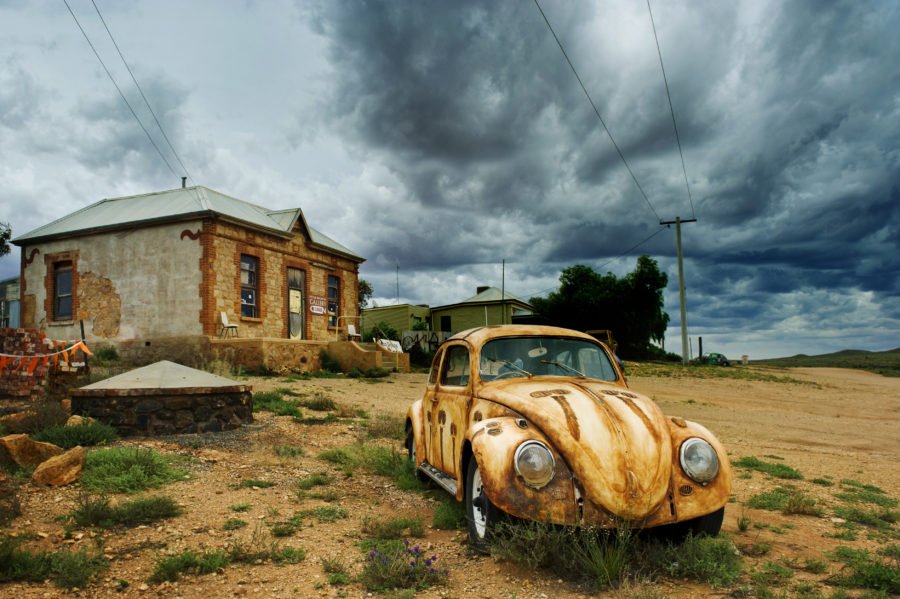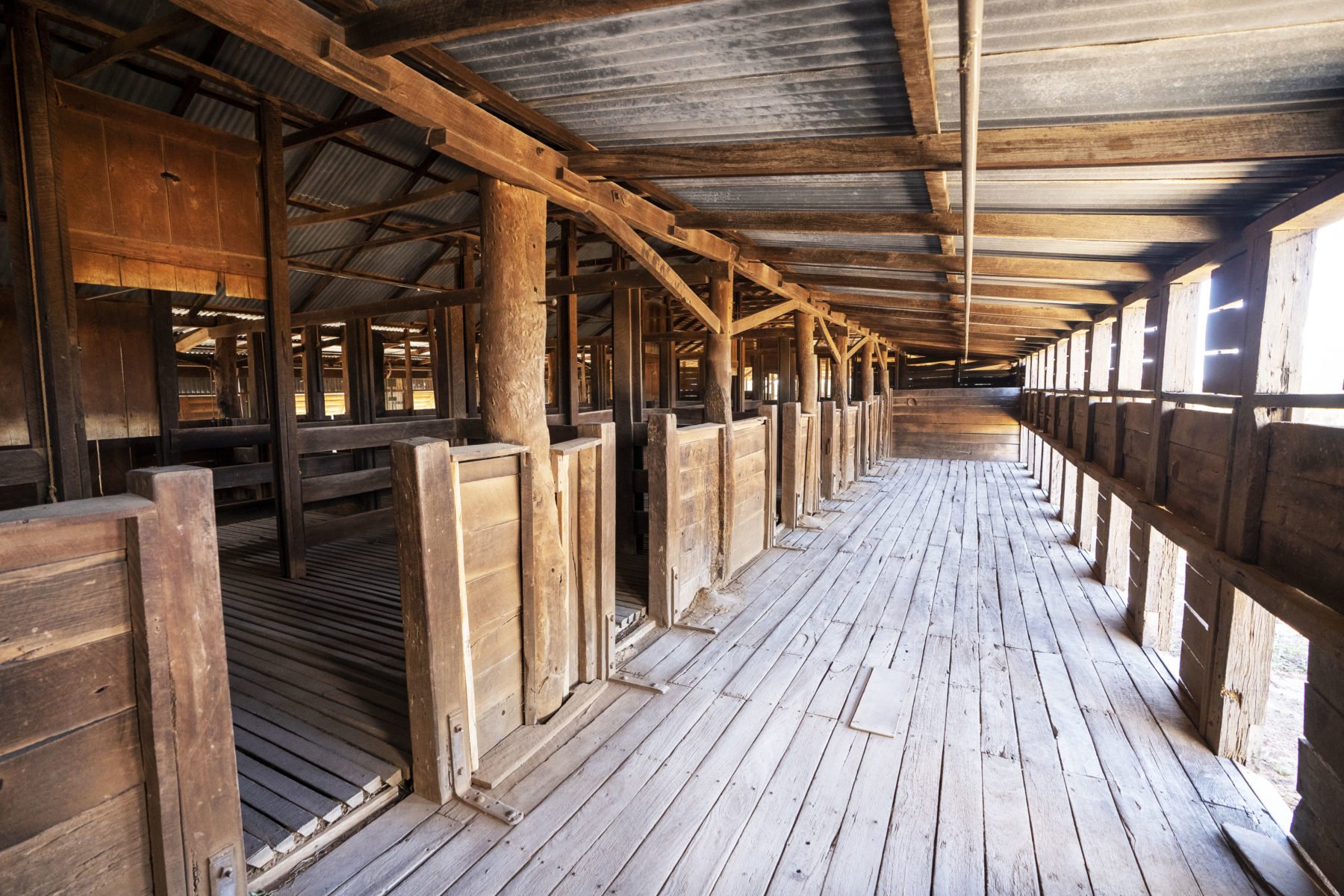The Darling Run

The Darling River Run is a journey of discovery through outback NSW that takes in all that this region is famous for. A rich Indigenous culture thrives along the river and in its basin, and can be seen in the ancient and globally renowned Brewarinna Fish Traps on the Barwon River, and heard in people’s stories. Indigenous art is very strong in this region, with galleries and artists to be found in towns such as Wilcannia and Bourke.
Accompanying this ancient link to the Darling River Run is plenty of more recent history from the time of European settlement. The Darling’s history as a transport route is evident in the many towns that began as river ports, with historic wharves still to be found, along with the chance to jump aboard a historic paddle-steamer (or a houseboat) and explore parts of the river. Add in awesome riverside camping, sublime national parks –
Mutawintji National Park is a must-visit, as is Paroo-Darling – the brilliant waterbird viewing at Menindee, excellent fishing for the prized yellow and silver perch, and you’ll have plenty of excuses to explore the outdoors here.
As well as the captivating landscape, the always welcoming towns and character-filled historic pubs (Tilpa Hotel is a standout, while the
community-run campsite directly opposite, complete with hot showers, is excellent) will ensure that the week you spend following one of Australia’s most famous waterways becomes a treasured lifelong memory.
Walgett Immerse yourself in one of the thermal Artesian Bore Baths, a natural source of 2-million-year-old warm therapeutic water that streams from the Great Artesian Basin, Australia’s largest groundwater basin.
Bourke, on the edge of the outback and the banks of the Darling River, brings together rich colonial and Indigenous heritage and spectacular natural surroundings of striking landmarks and ancient rock art.
Louth, once a bustling river port, is now a tranquil hamlet on the banks of the Darling. Its origins wind back to 1862, when an enterprising Irishman built a pub to service the passing river trade and named the tiny settlement after his hometown in Ireland.
Tilpa,a former paddle-steamer port, is home to the historic Tilpa Hotel, considered one of the last true Aussie bush pubs. Established in 1894 on the back of the flourishing river trade, this classic outback watering hole has been welcoming visitors for more than 100 years.
Wilcannia in the 1880s was a bustling port with paddle-steamers, bale-carrying camels, travelling gold prospectors and river-port trade carrying wool to Sydney. Once Australia’s third-
largest inland port, the town is now quieter but the memories live on.
Menindee is where you’ll cross paths with some intriguing history, from the wreck of the riverboat PS Providence in Kinchega NP to the legendary tale of Burke and Wills, who made this their last stop before their ill-fated expedition into the outback.
Kinchega NP: Camp beside the Darling among majestic river red gums and explore the historic buildings of Kinchega Station. Built in 1875 of corrugated iron and river stones.
Wentworth, your journey’s end (or start),is situated at the confluence of the Murray and Darling rivers. Explore ancient dunes and cruise the waters on heritage paddleboats.

Highlight
Mungo National Park
Mungo NP makes up part of the Willandra Lakes Region World Heritage Area (WHA), which covers 2400sq.km of semi-arid country in the Murray Basin of NSW. It consists of 19 dry relict lakes that were once filled with glacial meltwater, flowing east along Willandra Creek from the Great Dividing Range. These lakes, which were full from about 50,000 years ago, all have crescent-moon-shaped dunes called lunettes on their eastern sides, formed by prevailing winds. Mungo NP itself covers about 70 per cent of Lake Mungo, including the striking Walls of China, which are part of the lake’s 26km-long lunette.
Back when these lakes were full, the lush wetland system teemed with life. The region has been occupied for millennia by the Barkandji, Ngiyampaa and Mutthi Mutthi people, who hunted and foraged for freshwater mussels, yabbies, golden perch and Murray cod, as well as emus, kangaroos and other large species. The fossils of more than 55 animals have been found here, including extinct megafauna species such as Procoptodon and Genyornis.
When Professor Jim Bowler stumbled upon the cremated remains that came to be known as Mungo Lady, in 1969 at Lake Mungo, it suggested Aboriginal people had been here far longer than scientists suspected. But it was his 1974 discovery of Mungo Man that really startled the world. A series of studies confirmed that both Mungo Man and Mungo Lady were about 40–42,000 years old. Red pellets and staining found in the grave, as well as indications of a nearby fire, were evidence of one of the world’s earliest recorded funerary rites.
Visit Mungo NP as part of a 12-night, small-group luxury coach tour that travels through five states from Adelaide to Alice Springs. Visit Mungo NP, Silverton (above), Broken Hill and Cameron Corner, where three states meet. See Cooper Creek and stay at the Innamincka Hotel. Travel up the Birdsville Track, visit the Kalamurina Wildlife Sanctuary and experience the magic of the Simpson Desert, among other destinations.
Visit Outback Spirit for more.

